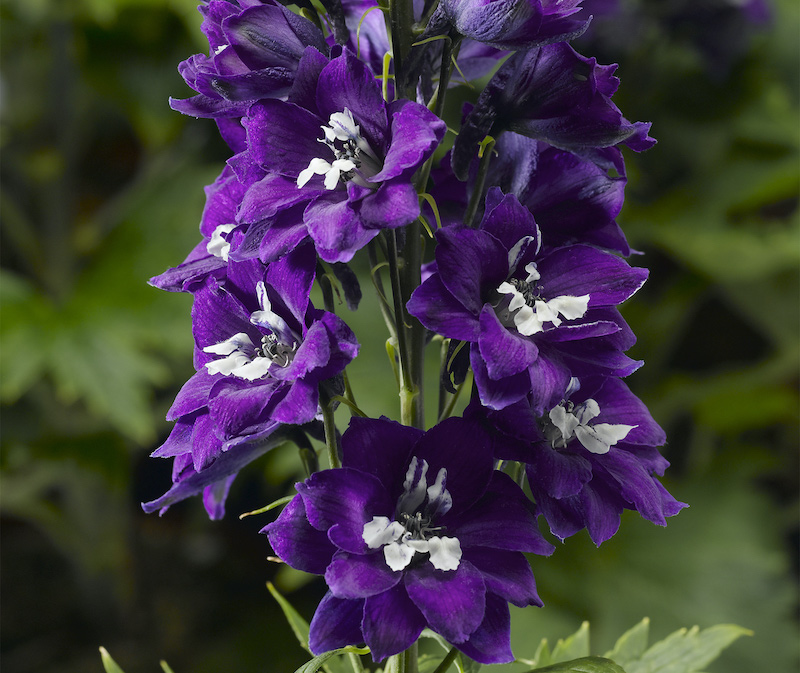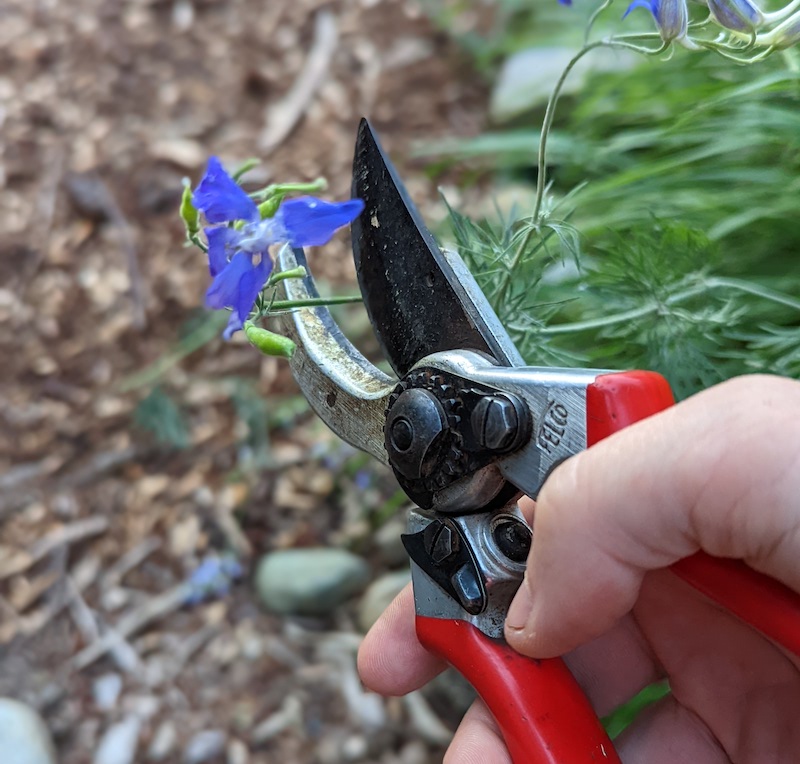Larkspurs are hungry plants that require applications of fertilizer throughout the growing season in order to grow strong and flower robustly. The fertilizer should have a balanced ratio of N-P-K to support flower growth over the formation of excess foliage. Larkspurs, both perennial and annual types, are plants that prefer the cooler months of spring and late summer and will slow down growth and bloom during the hottest part of the summer.

Common Reasons Why Larkspur Isn’t Blooming
Larkspur may decline in blooming for a few reasons. Not enough or the wrong type of fertilizer is the first thing to suspect. Larkspur grows best when it is fed regularly throughout the season. Even the perennial types need at least three applications of food. Underwatering will cause Larkspur to stall flowering in favor of keeping the rest of the plant alive. Plants that are grown in too much shade will produce smaller and fewer flower spikes.
Over time nearby trees and larger shrubs can grow large enough to shade smaller plants. Opening up the area by cutting back shrubs or selectively pruning tree branches can help expose the garden to more sun. Larkspurs that are crowded in a pot or in need of dividing in the garden will also slow their rate of blooming.

Pruning Larkspur To Help It Bloom
Deadheading Larkspur will encourage more flower spikes to form. The second flush of blooms may be slightly smaller in height, but the flowers themselves should remain the same size. Removing spent flowers before the plant can ripen seed is the best way to keep Larkspur blooming. Perennial types of Larkspur will not be bothered by continual deadheading. Annual cultivars of Larkspur have only one season to set seed. Deadheading them works for a while in the summer, but at some point, they will bolt and stop forming more flowers.

Fertilizing Larkspur To Help It Bloom
Fertilizing Larkspur needs to be done on a set schedule to help the plants produce the biggest and most flower spikes possible. The first feeding should be done early in the spring as the new growth returns. A balanced slow-release fertilizer, with a 10-10-10 NPK ratio, will support growth of the whole plant, encouraging healthy foliage, strong stems, and normal flower bud formation. When the first flush of flower spikes emerges, feed with a food formulated for heavy flowering or fruiting.
The fertilizer can be granular or in diluted liquid form. Fertilizers labeled for use on Rose or Tomatoes will have a higher Phosphorus (P) content and promote more flower formation. The last feeding of the season with the Rose or Tomato fertilizer will prepare the plant for another round of blooming late in the summer, at least 6 weeks after the second feeding.
Annual types of Larkspur prefer to be fed on a monthly basis with a Rose or Tomato fertilizer for every feeding. Using organic compost for a mulch will also release nutrients into the soil as it helps the soil retain moisture. Fertilizers will still be needed as compost has different nutrient levels that are not easy to control.
Get Larkspur To Produce More Blooms
Perennial and annual types of Larkspur will continue to bloom from late spring through to the fall when all of their needs for fertilizing are met. The annual types grow only to set seed in one season and will eventually bolt and can be heavy self-seeders. Perennial Larkspur are fussier about the climate that they bloom in. Hot, dry weather will make them slow down on flower formation. With continued watering during the hottest part of the summer, perennial Larkspur will resume strong growth when the weather cools in the late summer.
Why Larkspur Isn’t Blooming
- Not enough nutrients for these heavy feeders
- Plants are too dry, especially during hot, dry weather
- Too much shade will result in smaller and fewer flower spikes
- Perennial types need regular dividing to keep them growing vigorously
 |
Author Robbin Small - Published 8-22-2022 |
